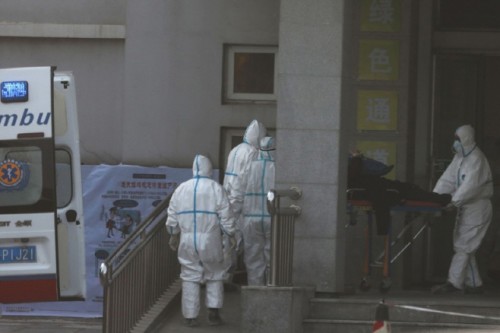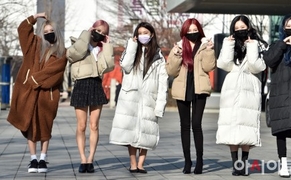 |
| Medical staff members carry a patient into the Jinyintan hospital, where patients infected by a SARS-like virus are being treated, in Wuhan in China's central Hubei province on Jan. 18, 2020./ Source: Xinhua news agency |
By Beijing correspondent Hong Soon-do
The Wuhan pneumonia virus is reviving fears of SARS (Severe Acute Respiratory Syndrome) in China.
The Chinese government has classified Wuhan pneumonia as Class B infectious disease, the same category as the SARS and MERS epidemic, and raised the response to the disease to the highest level. It suggests that China has declared a war on the new corona virus.
There are also concerns that the actual situation is a lot more serious than what the Chinese authorities has said so far.
State-run Xinhua news agency reported Wednesday that China’s National Health Commission warned that the virus is spreading via human-to-human transmission, specifically through the respiratory tract and that there is a possibility that the virus could mutate, aiding the spread of the disease. “Experts believe that confirmed cases of infection are mostly related to Wuhan, and cases of people-to-people transmission of the virus, including infections to medical personnel, have been detected,” said Li Bin, vice head of the National Health Commission, during a press conference.
“The virus can spread among communities to a certain extent, mainly through respiratory infection, and it is likely to be mutated as the pneumonia epidemic is at a risk of further spread,” Li said. This is the first time that the health body acknowledged that the situation was quite serious.
The disease has now been detected outside of Asia as well. The U.S. confirmed the country’s first case of the virus on Tuesday, stirring global panic.
The patient is a man who recently traveled to Wuhan, China, according to the federal Centers for Disease Control and Prevention (CDC).
The CDC is investigating whether people who had contact with the patient have similar symptoms. In this regard, Cui Zhen, a medical practitioner in Beijing, said, “The situation is quite serious. Now the Chinese authorities should notify all relevant information to the public. If the virus has spread to the United States, it is not just a problem for China.”
While most of the confirmed diseases occurred in people in Wuhan, cases have been reported in other cities in China, such as Beijing, Guangdong and Shanghai, as well as neighboring countries such as South Korea, Japan and Thailand. The death toll from the Wuhan virus in China has climbed to nine on Wednesday with over 400 confirmed cases.
One case has been confirmed in South Korea. The health authorities are planning to respond in full-scale as the number of Chinese visitors is expected to increase during the upcoming Lunar New Year holiday, one of China’s biggest holidays.
The Korea Centers for Disease Control & Prevention discussed the countermeasures with the medical community including the Korean Society of Emergency Medicine and regional emergency medical centers as increased inquiries to medical institutions and increased emergency room visits are expected during the Lunar New Year holiday. The health authorities issued guidance on how to detect and treat people sickened by the virus.
They also advised the people to avoid contact with animals in China, to refrain from visiting traditional markets, and to wear a mask if they have a cough or runny nose.
#Wuhan #pneumonia #SARS #China
Copyright by Asiatoday
Most Read
-
1
-
2
-
3
-
4
-
5
-
6
-
7





















